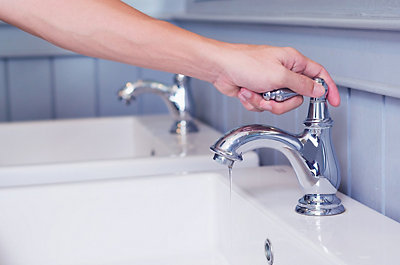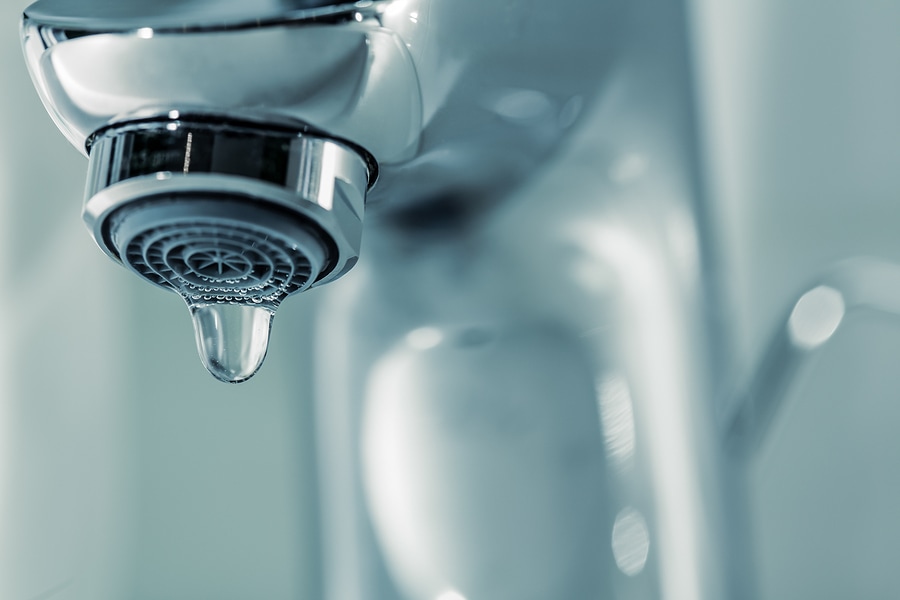Learning the Significance of Fixing a Broken Faucet
Learning the Significance of Fixing a Broken Faucet
Blog Article
We have unearthed this post on Water Dripping from Faucet: Why and How to Fix listed below on the web and think it made sense to quickly share it with you in this article.

Leaking faucets could feel like a small trouble, however their impact goes beyond simply the annoyance of the audio. From drainage to sustaining unnecessary economic expenses and health threats, neglecting a dripping tap can cause various effects. In this post, we'll delve into why it's critical to address this usual home concern without delay and efficiently.
Wastefulness of Water
Environmental Effect
Trickling faucets contribute significantly to water waste. According to the Environmental Protection Agency (EPA), a solitary tap trickling at one drip per secondly can squander greater than 3,000 gallons of water each year. This not only stress water sources however additionally influences communities and wildlife based on them.
Step-by-Step Overview to Dealing With a Dripping Tap
Devices Called for
Prior to trying to take care of a leaking faucet, gather the required tools, consisting of a flexible wrench, screwdrivers, substitute components (such as washing machines or cartridges), and plumber's tape.
Typical Faucet Issues and Their Solutions
Recognize the kind of faucet and the specific concern triggering the drip. Common troubles consist of damaged washers, corroded shutoff seats, or defective O-rings. Describe supplier directions or on the internet tutorials for step-by-step guidance on repair work.
Financial Prices
Raised Water Costs
Past the environmental impact, leaking taps can pump up water costs considerably. The accumulated wastage over time translates into higher energy expenditures, which might have been avoided with timely repairs.
Potential Residential Property Damages
Furthermore, extended dripping can bring about harm to fixtures and surface areas surrounding the faucet. Water buildup can trigger discoloration, corrosion, and even architectural concerns if left unattended, leading to extra repair service expenses.
Wellness Problems
Mold and Mildew Development
The constant existence of dampness from a dripping tap develops a perfect atmosphere for mold and mold growth. These fungi not just compromise interior air top quality however additionally pose health and wellness risks, specifically for individuals with breathing problems or allergies.
Waterborne Illness
Stationary water in trickling taps can become a breeding ground for bacteria and other microorganisms, boosting the danger of waterborne illness. Pollutants such as Legionella germs prosper in stagnant water, potentially bring about significant ailments when consumed or inhaled.
DIY vs. Professional Repair
Pros and Cons of Do It Yourself Repair
While some might attempt to deal with a leaking faucet themselves, do it yourself repairs come with their very own collection of difficulties. Without correct understanding and devices, DIY efforts can exacerbate the problem or bring about incomplete repair services, lengthening the problem.
Advantages of Working With a Professional Plumber
Working with a professional plumber guarantees that the underlying root cause of the trickling tap is dealt with successfully. Plumbers possess the knowledge and devices to identify and fix faucet problems effectively, saving time and reducing the threat of more damages.
Environmental Responsibility
Individual Contribution to Preservation
Taking duty for taking care of leaking faucets straightens with wider efforts toward water conservation and ecological sustainability. Every individual's activities collectively make a considerable effect on preserving priceless sources.
Lasting Living Practices
By prioritizing prompt repair services and adopting water-saving behaviors, individuals add to sustainable living techniques that profit both present and future generations.
Preventive Measures
Normal Maintenance Tips
To stop dripping faucets, do routine maintenance such as cleaning up aerators, inspecting for leaks, and changing damaged parts immediately. In addition, take into consideration mounting water-saving gadgets or updating to much more effective components.
Relevance of Prompt Services
Resolving leaking faucets as quickly as they're observed avoids further water waste and prospective damage, ultimately saving both water and money in the long run.
Effect On Residential Or Commercial Property Value
Assumption of Well-Maintained Building
Keeping a property in good condition, including resolving upkeep issues like trickling faucets, enhances its viewed value and worth among possible purchasers or tenants.
Impact on Resale Worth
Characteristics with well-maintained plumbing components, consisting of taps, command higher resale worths in the real estate market. Attending to trickling faucets can add to a positive perception throughout property evaluations and arrangements.
Verdict
Addressing a leaking tap goes beyond simple benefit; it's a crucial action towards preserving water, reducing financial costs, and safeguarding health and residential or commercial property. Whether with DIY repairs or professional assistance, doing something about it to deal with trickling taps is a little yet impactful method to promote liable stewardship of sources and contribute to a healthier, extra lasting future.
How to Fix a Leaky Faucet: Step-by-Step Repair Guide
A leaky faucet may seem like a simple annoyance, but if it's not fixed promptly, that leak could cost hundreds to potentially thousands. From water damage to mold, mildew, and high water bills, even a tiny leak can be catastrophic if left unattended. Damage like this can even affect the overall value of your home, so it's important to take the right approach for leaky faucet repair. You may need the help of a plumber in some cases, but we've got a few tips you can try on how to fix a leaky faucet before calling the pros.
Four Faucet Types
When you're learning how to fix a leaky faucet, the first step is knowing what kind of faucet you're working with! There are four common types.
Cartridge Faucets
Cartridge faucets come in one- or two-handled varieties. In one-handled cartridge faucets, hot and cold water combines in a single cartridge. In the two-handled versions, hot and cold water are controlled separately and mixed in the faucet.
Ball Faucets
Ball faucets have a single lever you push up and down to adjust the pressure and rotate to change the temperature. A slotted metal ball controls the amount of water allowed into the spout.
Compression Washer Faucets
They're the oldest type of faucet, but they're still used in many homes — especially older ones. Compression faucets have two separate handles that, when turned, raise or lower the washer that seals a water valve. This valve stops water from flowing through the faucet when it is turned off.
Disc Faucets
Disc faucets rarely need to be repaired due to their maintenance-free design. The water flow is controlled by two discs — the upper one raises and lowers against a fixed lower disc, creating a watertight seal. If your disc faucet starts leaking, you may need to replace the seals or clean residue buildup from the inlets.
Fixing a Leaky Faucet
Step 1: Turn Off the Water
Whether you're learning how to fix a leaky bathtub faucet or how to fix a leaky kitchen faucet, always turn off the water supply to your working area when you're fixing a leak. The last thing you want is a flood added to your list of things to fix.
Look for the shutoff valves below your sink or around the tub and turn them clockwise to stop the water flow. If your faucet doesn't have shutoff valves, you may need to turn off the water for the whole house. Check to make sure it's off by turning the faucet on. If nothing comes out, you're ready to start the repair.
Step 2: Take Apart the Faucet
How you disassemble your faucet depends on the type of fixture you have. You can use a flathead screwdriver to remove the caps on top of the handle or handles for cartridge and compression faucets. Inside, you should see handle screws. Unscrew these with a screwdriver to remove the handle.
Disc- and ball-style faucets will typically have an inlet screw near the handle, and removing that will reveal the interior of the faucet.
Detach the Valve Stem
For cartridge- and compression-style faucets, you'll see the inner valve stem or cartridge once you remove the faucet handles. If you have a compression faucet, unscrew the brass valve stem. If you have a cartridge faucet, pull out the cartridge. If your cartridge has been in place for a while, it may require some tools or extra force to remove it due to mineral deposits.
Examine and Replace Parts
Once you've removed the parts, check them out to confirm what needs to be replaced. You may see corroded rubber washers, O-rings, stems, or cartridges. On a ball-style faucet, check the seats and springs for damage.
If you need to repair a leaky disc faucet, check the inlet and seals on the lower disc.
Once you determine what parts must be replaced, visit your local hardware store. Bring the damaged parts with you to ensure you can purchase the correct components to replace them.
Clean Valves and Faucet Cavity
If you've removed a stem or cartridge, you may notice mineral buildup in the faucet's threads. Use white vinegar to clean the valve seat by soaking it for a few minutes, then scrub it away with a soft toothbrush and rinse with warm water. You can also clean the interior of the faucet in the same way.
Reassemble the Faucet
Once your faucet is cleaned and the required parts have been replaced, it's time to reassemble it. Put the pieces back together and slowly turn the water supply back on. Doing this slowly is crucial because too much initial water pressure can damage the new hardware you've just installed.
https://homewarranty.firstam.com/blog/how-to-fix-leaky-faucet

I'm certainly very focused on Why It's Important to Fix Leaky Faucets and I hope you liked the new blog post. In case you liked our post kindly remember to share it. Many thanks for your time invested reading it.
Report this page